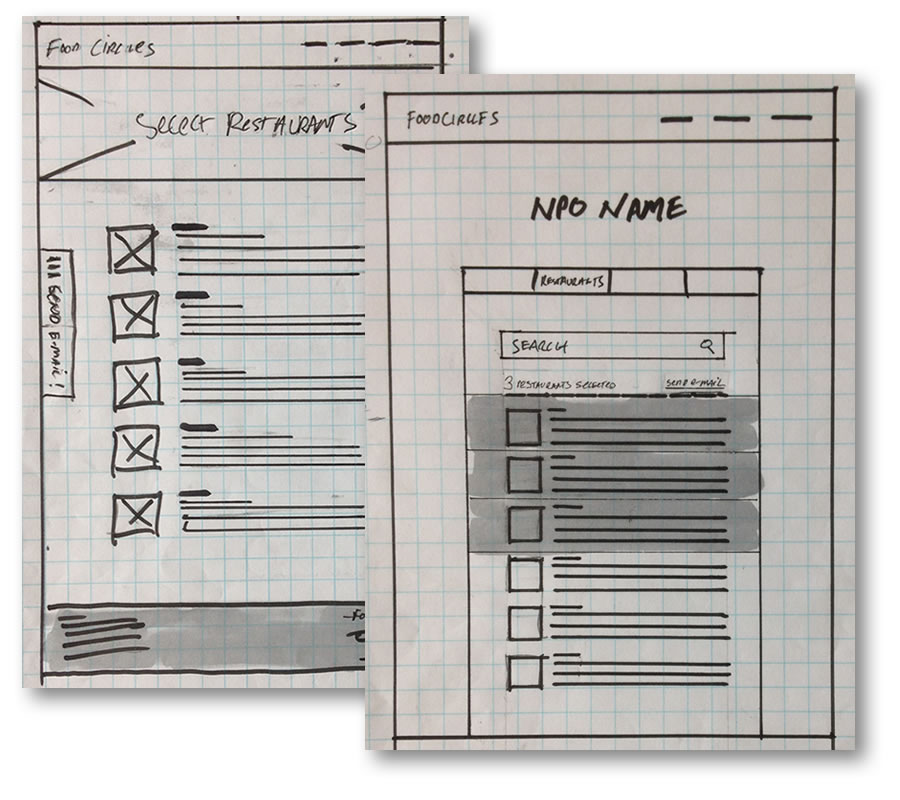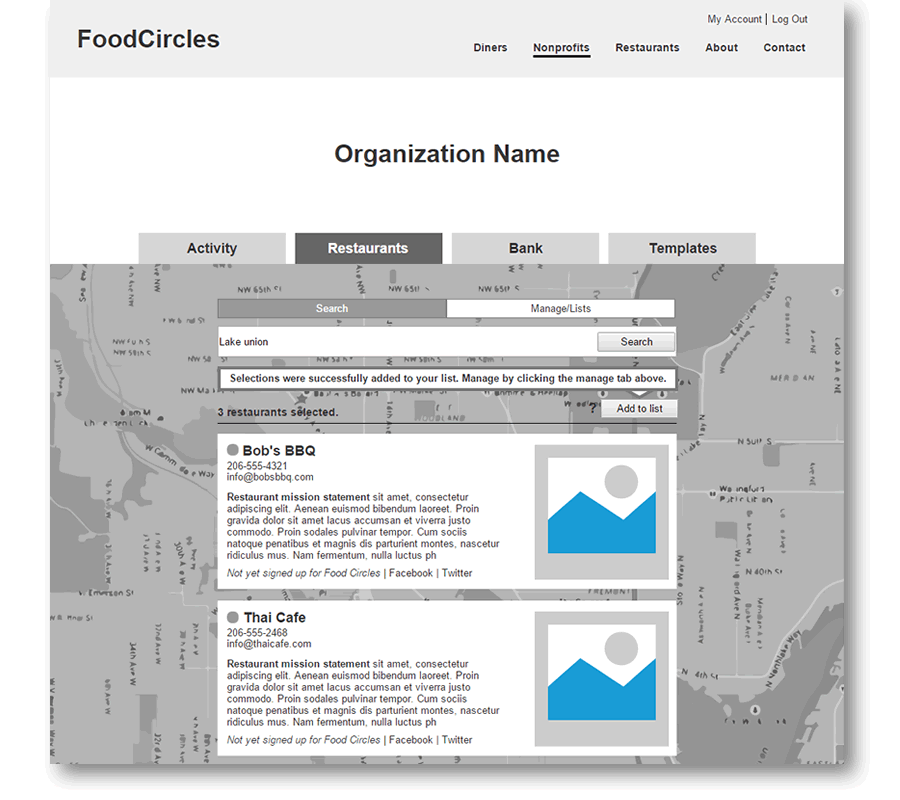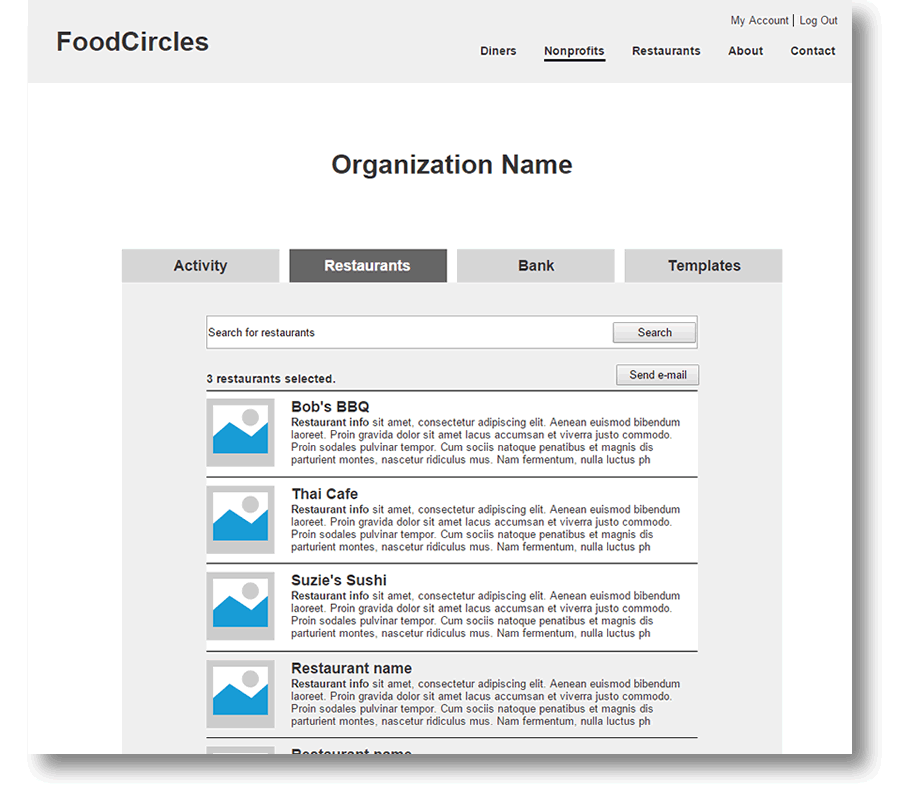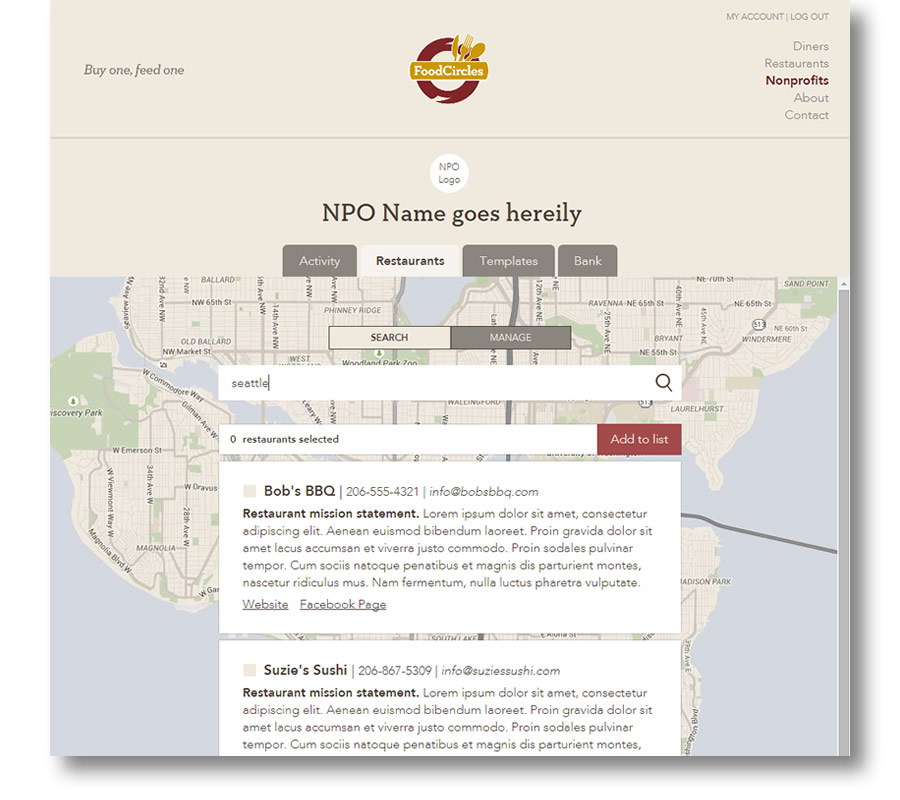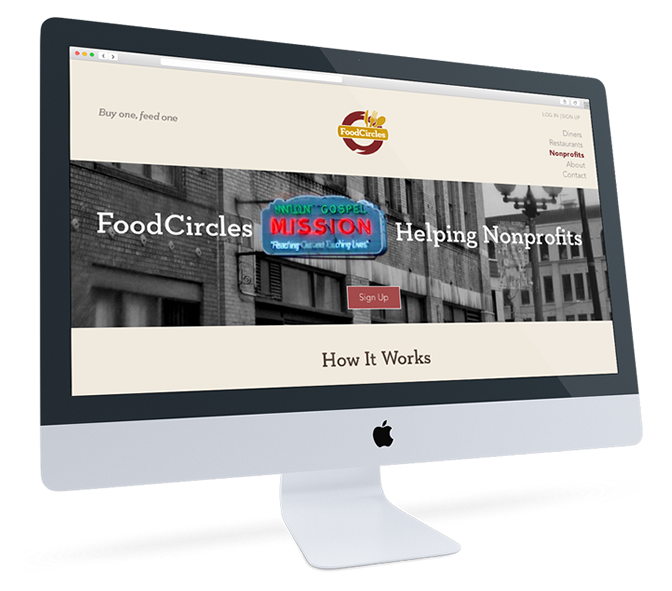
“We need the ability for our nonprofit organizations to leverage the FoodCircles platform.”
Jonathan Kumar
Founder & CEO, FoodCircles
The Challenge
FoodCircles owner, Jonathan Kumar, has a wonderful vision… enable people dining at local restaurants to feed a child by purchasing a discounted meal.
His vision has been successful in their pilot city, Grand Rapid, MI. But, in order to grow and receive additional funding from interested parties, FoodCircles must show that it can replicate in other cities. The best way to do this is to allow nonprofit organizations to use the FoodCircles platform. It’s a win-win: nonprofits will get more local restaurants involved, more diners will eat at these restaurants thus feeding more hungry children.
One problem… the nonprofit platform doesn’t exist… yet!
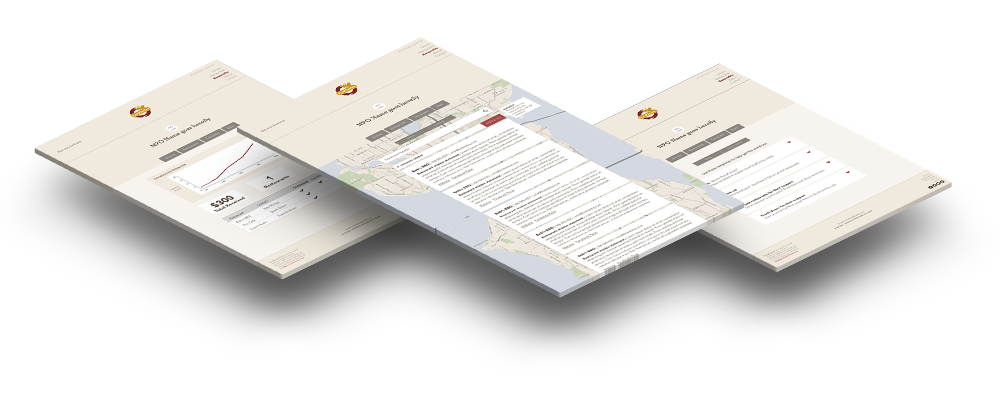
Research
Our research began with a 1.5 hour interview of our stakeholder, Jonathan. We learned about his needs but held an open mind with the intent to have those needs validated by research.
Research Stage Deliverables
Project Summary
Competitive & Comparative Analysis
Heuristic Evaluation
KPI & Success Metrics
User Interviews
Organizational Research
Online Surveys
Affinity Diagram
FoodCircles exists in a unique space combining traits of social cause, fundraising, vouchers, and CRM systems.
We looked at over 50 companies such as Feedie, Mogl, Action Against Hunger, Zero Percent, Groupon, Go Fund Me, Classy, Give Forward, No Kid Hungry, Blackbaud, FundRazr, and Eventbrite Fundraising. We compared 44 features such as, usability, size, website/mobile app, ease-of-use, registration process, analytics capabilities, fundraising, social media integration, and other categories.
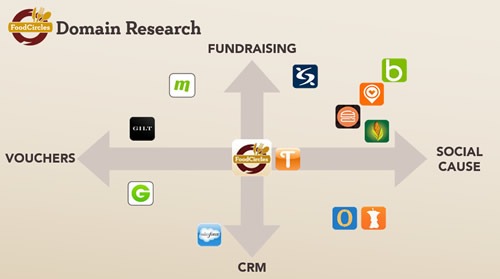
Only one company, TangoTab, was a close competitor… but existed only in the Dallas market area.
Research included over 50 companies in FoodCircle’s competitive / comparative space, 11 user interviews, and 28 survey responses.
We performed a thorough heuristic analysis of the current FoodCircles site as well as its closest competitors.
Web Surveys & User Interviews
To challenge both Jonathan’s hypothesis of what he needed (as well as our own), we crafted both web surveys and user interview questions. We screened for nonprofit administrators and interviewed 11 of them about their needs, fundraising, and what roles people played.
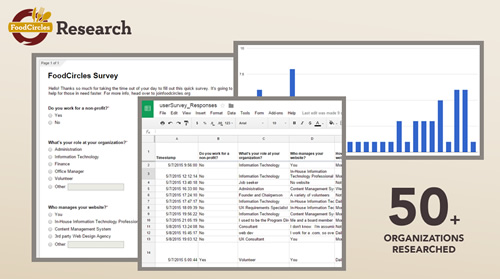
Affinity Diagramming
Our team compiled insights from the 11 user interviews and the 28 responses to our online survey. Insights were put on Post-It notes. We desired Jonathan’s input for our affinity diagramming session and invited him. We organized each idea and thought in silence for 30 minutes, covering the room! Yes, lots of photos were taken, but the coolest artifact is the video of our session!
Planning
It was now time to take an incredible amount of research data and turn it into something meaningful for FoodCircles.
Planning Stage Deliverables
User Flows
Cardsort Categories
Persona
Customer Journey
Scenarios
Storyboards
User Flow Development
Knowing that upon completion FoodCircles would move into the development stage, we wanted clear documentation of the system, pages, page states, database access points, etc. We also diagrammed our persona’s path through our prototype.
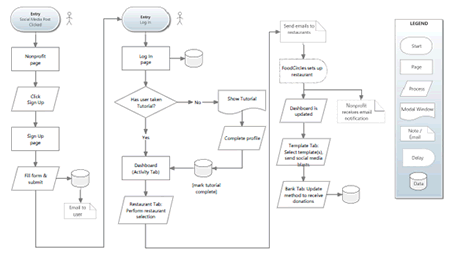
Persona Development
Our user interviews led us to a single, key persona: the nonprofit administrator. We found remarkable similarity between our interviewees: they were all totally committed to their cause, were short on time and money, and the effort put into fundraising events rarely matched returns.
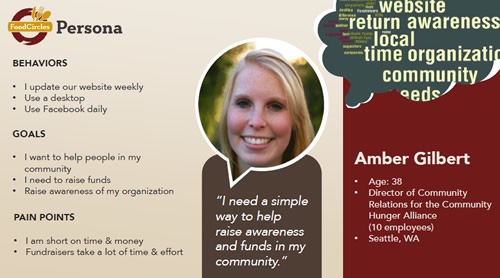
Customer Journey
Our customer journey demonstrated the path a nonprofit administrator typically takes today… and what it would look like if they were able to utilize the FoodCircles program.
1Strong engagement in their community requires both emotional, physical, and financial strength. Funds are always needed to accomplish goals. Each of our interviewees conducted an annual fundraiser which left them fatigued and discouraged that so much effort resulted in minimal gains.
2FoodCircles creates a new option when it comes to financial needs. Restaurants are more likely to join the FoodCircles program when contacted by a local nonprofit. More restaurants means more diners, more vouchers purchased, and income for the nonprofit. Diners and restaurants both become more engaged in their community and local needs.
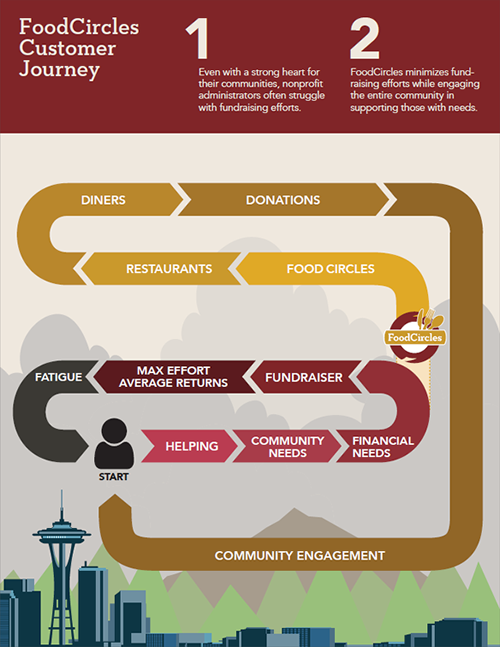
Design, Prototyping, Testing, & Iteration
Our design stage would involve rapid iteration in Axure and include sketches, wireframes, and prototypes for usability testing. Design, test, iterate, repeat.
We had a lofty goal of 3 prototypes, each revised from a series of usability tests. We drove hard to schedule our usability tests well ahead of time and were helped by many of our nonprofit administrators who were eager to help test.
Final Product
Recommendations
Recommendations to FoodCircles came in the form of a necessary To Do list, additional user testing, and thoughts for future implementation.
To Do
Testing
In a normal agile development process, new user tasks would be tested out and iterated upon. We recommended further testing on the effectiveness of the tutorial and how nonprofit administrators will actually manage restaurants in their account.
Future
Administrators had shown interest in the ability to upload their own organization’s logo, receive electronic deposits, edit and save their own templates, and create custom contact information for restaurants.
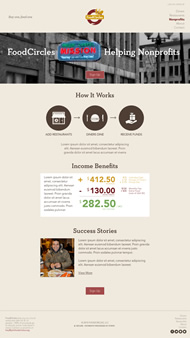
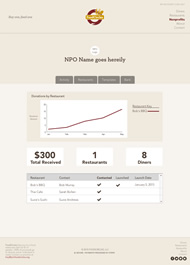
Retrospective
Designers should always keep a ‘personal journal’ of projects. Knowing what went well and what didn’t is key to growing and learning (and repeating) new tricks. I especially like going back to find things that went really well.
To say that Axure is a wireframing tool is quite an understatement. It’s more of a full-fledged prototyping program. For me, it tends to lead a designer toward high-fidelity quickly if you don’t watch yourself. High-fidelity tends to suck up time and prevent testing early and often.
Since we had a goal of 3 prototypes and needed to test, update, and test again, we set ground rules for designing in Axure… rules like no color and placeholders only, no images. This provided a set of healthy constraints and enabled us to move quickly.
Given the emotional impact that FoodCircles wishes to convey, the production site will need to select images carefully. However, by keeping design lo-fi until the end, layout was brought to the forefront and I believe we received feedback from users that otherwise may have been lost.

